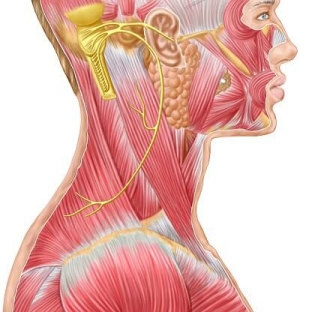Skin care methods and methods for correcting age-related changes should be selected taking into account such important factors as the dominant type of aging, concomitant external and internal causes affecting the skin condition, skin type, as well as facial skin properties depending on the age of the patient. When it is necessary to take into account hormonal changes in the patient's body, the processes of age-related involution, in order to slow down the aging process of the skin, read on estet-portal.com.
Properties of facial skin in young patients
13-25 years old. As a rule, girls make their first visit to a beautician in adolescence. The need for such a visit is usually explained by the properties of facial skin during puberty. At this time, its final formation under the influence of various hormones is completed. These hormones cause the sebaceous and sweat glands to work intensively, which is why the skin suffers from oily sheen and clogged pores, often causing acne. In addition, hormones affect changes in the ratio of different types of ceramides and the formation of an epidermal barrier that controls skin moisture. The skin of teenagers is very elastic and is able to recover quickly.
25-30 years old. At this age, the properties of the skin of the patient's face still retain teenage elasticity and the ability to quickly regenerate, but the problems of age-related acne and oily sheen are no longer so relevant.
The skin of 25-year-old girls still has smoothness and elasticity, but it is at this age that the first mimic wrinkles begin to form – on the forehead, in the corners of the eyes and lips.

30-40 years old. This age is characterized by the appearance of initial age-related skin changes. The thickness of the stratum corneum increases, the activity of fibroblasts and other cells of the dermis gradually decreases, which leads to a violation of the structure of elastic and collagen fibers, a decrease in their production by one percent annually. The content of hyaluronic acid in the skin decreases, which leads to a decrease in turgor, the manifestation of sagging and dryness, and the formation of wrinkles.
Properties of facial skin to be considered when choosing procedures for a patient over 30 years of age are:
- skin becomes thinner, drier;
- pigmentation appears;
- mimic folds deepen;
- microcirculation worsens, affecting complexion;
- the oval of the face is deformed due to the gradual descent of the soft tissues of the middle third of the face.
After the age of 35, women begin to gradually decrease the production of the hormone estrogen in the body, which causes skin laxity, dryness and a decrease in regenerative capabilities.
Properties of facial skin typical for patients of older age groups
According to the definition of the World Health Organization, patients enter the period of middle age after 44 years. It is quite possible that the criteria for average age were calculated taking into account, among other factors, the properties of the skin of the face, which after 40 years begin to change dramatically.
40-50 years. At this age, distinct involutive processes are observed in the skin: the thickness of the epidermal and dermal layers decreases, the subcutaneous fatty tissue gradually atrophies. Microcirculatory disturbances lead to telangiectasias, rosacea. The most characteristic external manifestations of age-related changes due to the properties of the skin of the face:
- scaling, pigmentation;
- formation of jowls, second chin, wrinkles on the neck;
- "floating" oval face, erased features;
- circles under the eyes, heavy eyelids, distinct "crow's feet" in the corners of the eyes;
- significant deepening of the nasolabial folds.
The regenerative ability of the skin is significantly deteriorating, it will take at least a month and a half to completely renew it.
50-60 years. The key factor influencing the condition of the skin of the face during this period is the age-related hormonal changes in the body.
The significant drop in estrogen production after the age of 50 due to menopause exacerbates dry skin and insufficient blood supply.
Due to insufficient hydration and depletion of subcutaneous fat, deterioration of melanocytes the color and thickness of the skin changes, senile pigmentation appears, lipoatrophy progresses.
60-70 years. After the onset of the 60th anniversary, many women note that the process of rapid skin aging slows down, and its condition stabilizes. The main characteristics of the skin at this age:
- skin is pale, thin, dry;
- vellus hair grows on the cheeks and chin;
- pigmentation spots and skin neoplasms develop;
- horizontal and interbrow wrinkles on the forehead are aggravated;
- facial features are sharpened.
In women over 70 years old, the skin has a yellowish tint due to the fact that fatty tissue is visible through its thickened stratum corneum. The skin loses its elasticity to a great extent and is characterized by multiple deep wrinkles.
As for men, due to the influence of hormones, a high density of collagen fibers is retained in their skin for a long time, which allows them to maintain a youthful appearance much longer than their peers.







Add a comment